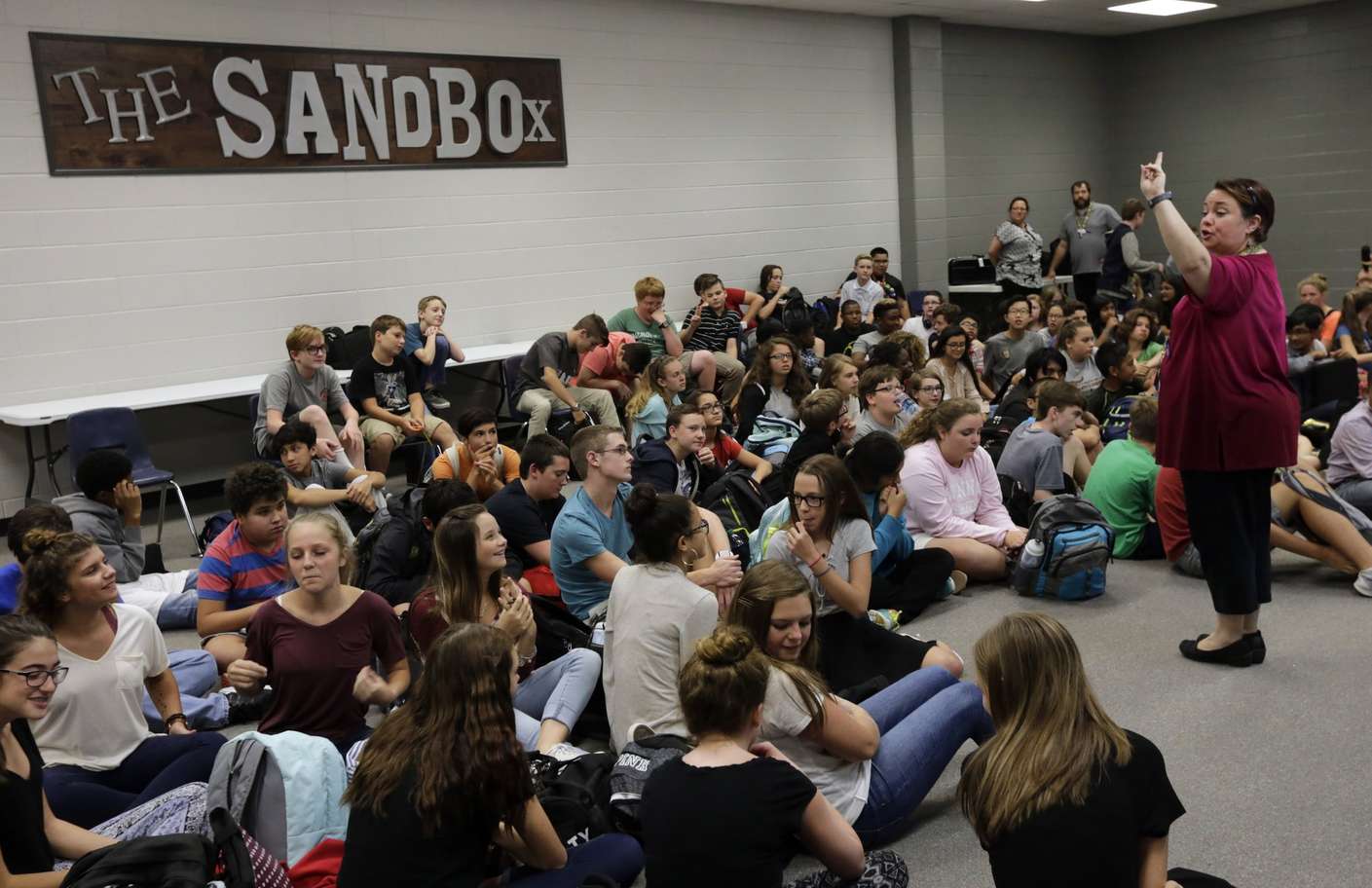By Eric Stirgus
The Atlanta Journal-Constitution
WWR Article Summary (tl;dr) Educators are increasingly trying to find ways to close the gender gap in STEM fields. One such effort is in the works is in Gwinnett County, Georgia where Lanier Middle School will soon have an after-school program for girls focused on science and technology.
The Atlanta Journal-Constitution
Last month’s results on the ACT, a college-entrance exam taken by a growing number of Georgia high school students, highlighted an ongoing problem.
Boys are doing better than girls in STEM, the acronym educators use for science, technology, engineering and math.
Girls’ scores lagged those of boys in math and science by greater margins in Georgia than nationally. On last year’s SAT, the mean score in Georgia for boys was 29 points higher in math. By comparison, the difference was just eight points in reading.
The gender gap also exists in those subjects on the college level.
In 2013, men outnumbered women nearly 3-to-1 in attaining computing degrees or certificates in Georgia, according to Change the Equation, a coalition aiming to make all students STEM-literate. Men, the data show, received engineering degrees or certificates by a near 4-to-1 ratio. And those rates have increased over the past decade.
“This gender thing is disturbing,” said Dana Rickman, policy and research director for the Georgia Partnership for Excellence in Education.
Educators are increasingly trying to find ways to close the gap. One such effort is in the works in Gwinnett County, the state’s largest public school system. Lanier Middle School will soon have an after-school program for girls focused on science and technology.
Lanier High School junior Teishana Antoine, wanted to help younger girls like herself who are considering careers in these subjects and helped get a $3,000 grant from tech giants Apple, Intel and Microsoft for the program.
“We can also be the ones creating the (computer) code and showing (girls) what STEM really is,” said Antoine, 16, surrounded in a recent interview by seven female classmates interested in STEM.
State education department officials last year co-sponsored a workshop to get more middle school girls greater exposure to STEM.
The statistics aren’t all troubling for girls in STEM. Girls fared as well as boys on the state’s Georgia Milestones assessments this past spring. Forty-two percent of Georgia Tech’s freshman class are women, according to the school, the highest percentage since it started tracking such data. Tech’s undergraduate admissions office has a special women’s recruitment team. The tech company Intel last year gave Georgia Tech $5 million to be used over five years to produce a more diverse workforce.
Georgia business and political leaders have preached the gospel of STEM, noting the prosperity of those professions. Without more well-educated STEM workers, Georgia’s economy suffers, they say.
Barbara Ericson, a longtime researcher on the topic, said there’s also a practical need for women who know their stuff in STEM.
“Diverse teams make better products,” said Ericson, director of outreach in Georgia Tech’s Institute for Computing Education.
Some data show boys are taking more rigorous STEM courses than girls, which gives them an advantage during the college admissions process. More boys took Advanced Placement high school exams in math and science last year, according to the most recent annual summary report.
The barrier appears to be social and cultural: Because of society’s expectations and stereotypes, girls don’t get the same encouragement to excel in those areas, and too many consequently believe they cannot, say Rickman and others.
More than a dozen female students interviewed for this article agreed. They say girls like math and science, but many focus on classes where they can better explore their creativity in middle school and high school. Some girls, they say, get discouraged when having trouble in a math and science class and lose interest. They also say some girls, surrounded by boys in math and science activities, lose confidence.
“It’s kind of hard to step up if you are the only girl in a group,” said Sydney Leahy, 13, an eighth-grader at Lanier Middle.
Michele Langhans, a science teacher at the school, says she stresses to girls the long-term importance of excelling in STEM.
“There are more college scholarships in STEM,” she said.
Several experts say girls need more women STEM teachers.
Federal data show about 58 percent of public high school teachers are women. In math and science the percentages are slightly lower, 57 and nearly 54 percent, respectively. In English, though, where girls perform better on standardized tests, about 77 percent of teachers are women.
In January, a team of researchers at Duke University and the University of North Carolina Charlotte released a report that found “a positive and significant association between the proportion of female math and science teachers in high school and young women’s probability of declaring a STEM major.”
Part of the problem may also lie with Super Mario. Well, not solely that popular video game character, but video games that are geared toward boys and get them more interested in computer science, Ericson said. Some research has shown teenagers who play online video games score above average in math and science.
For her part, Ericson has sent letters to minority and female students who’ve done well on the PSAT to encourage them to take Advanced Placement Computer Science classes in high school. The College Board, which puts together AP courses, recently created a Computer Science Principles class it hopes will draw more women and minority students. Gwinnett has one of the classes.
At Lanier High, the girls interested in STEM support each other. They help each other with projects and in competitions. Three years ago, there were no girls on the executive board of a STEM-related student group. Now, five of the eight board members are girls.
Lanier High teacher Michael Reilly, who founded the school’s Center for Design and Technology program, explained how three boys got on the board.
“They threw them a bone,” he joked.














































































































































































































































































































































































